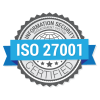Earlier this year we published on this blog the first article of our Mastering Procurement Data series, where we share the process to achieve complete excellence in your procurement function. The first article of the series entitled “Mastering Procurement Data – The Power of a Unified Source of Record” talked about the importance of creating a unified data repository and the benefits of having all of your information in one place. That’s the first step of achieving excellence.
And let’s face it, with procurement directors maintaining their positions for an average of only 1 to 2 years according to research, and over 60% leaving before reaching their fourth year, you want to see these results fast – and we want to help you get there.
In this article, we will explore the next step of the process, which is to enhance your team’s capability to effectively analyze this data. After establishing a unified data source within your business, the next big part of the journey is to properly train your team. Want to find out how? Let’s dig in!
Targeted Training
So, how can your team effectively analyse the mountain of data they see every day? The best answer to this question is simple, but not easy to accomplish: proper training. They need training in analytics and a deep understanding of appropriate taxonomies – both are indispensable. Data analysis represents a vast domain, and without a targeted approach, the sheer volume of data can become unmanageable. Ensuring your team is adept at analyzing procurement data is essential for identifying trends and making strategic decisions.
The essence of training should be to equip your team with the skills necessary to deliver insights that address specific business needs. It is critical for team members to recognize that data analysis extends beyond mere examination; it is about scrutinizing the right data for a defined purpose.
Understanding Data Analytics in Procurement
At its core, data analytics in procurement involves the systematic analysis of spend data, supplier performance, market trends, and other relevant metrics to drive strategic decisions. This discipline leverages various statistical, quantitative, and predictive models to interpret complex datasets, revealing patterns, correlations, and insights that were previously obscured. For procurement teams, mastery over data analytics is not just about possessing the ability to handle tools and technologies; it’s about developing a keen understanding of how to translate data into actionable intelligence.
The journey towards analytics proficiency begins with a clear grasp of descriptive analytics, which focuses on historical data to answer what has happened within the procurement domain. This foundational step is essential for teams to assess past and current performance accurately. However, the true strategic value of data analytics is unlocked when teams advance to predictive analytics, which employs statistical models and forecasts to predict future trends. Finally, prescriptive analytics goes a step further by not only predicting future outcomes but also recommending actions that can advantageously impact those outcomes.
Bridging Taxonomies with Data Analytics
Understanding taxonomies in the realm of procurement data analytics is akin to having a master key for unlocking the full potential of data insights. Taxonomies provide a structured classification system that organizes data into coherent categories, making it possible to sift through vast amounts of information systematically. In the context of data analytics, taxonomies serve as the critical framework upon which data is analyzed, interpreted, and acted upon. They enable procurement teams to efficiently map out spend data, categorize supplier information, and delineate procurement activities, thus ensuring that the data analyzed is both relevant and organized for strategic application.
The strategic integration of taxonomies with data analytics facilitates a more nuanced analysis of procurement data. For example, by applying a well-defined taxonomy to spend data, teams can easily segment spending by category, department, or supplier, enabling targeted analysis that can uncover specific cost-saving opportunities or areas of inefficiency. In addition to that, taxonomies aid in the normalization of data across diverse systems and formats, which is essential for achieving a holistic view of procurement activities and outcomes.
Benefits of a Team Properly Versed in Data Analytics and Taxonomies
Developing an in-depth understanding of data analytics enables procurement teams to transition from being transactional entities to becoming strategic partners within the organization. With analytics, procurement is not merely reacting to market changes and internal demands; it is anticipating them and strategically aligning procurement activities accordingly. This forward-thinking approach facilitates more robust supplier negotiations, targeted cost-saving initiatives, and optimized supply chain strategies.
The application of advanced analytics can also illuminate risk management strategies by identifying potential supply chain disruptions before they occur, allowing for the development of contingency plans. It also plays a crucial role in supplier relationship management by providing insights into supplier performance, compliance, and collaboration opportunities.
As to the added benefits of understanding taxonomies, the effective use of taxonomies within data analytics empowers procurement professionals to identify trends and patterns with greater accuracy as well as to communicate findings and insights in a manner that is readily understandable by stakeholders across the organization. This clarity of communication is crucial for driving strategic initiatives and gaining organizational buy-in for procurement strategies. A deep understanding of how taxonomies intersect with data analytics is indispensable for transforming procurement data into strategic insights that can drive meaningful business outcomes.
Appropriate training empowers your team to derive meaningful insights from data, which in turn, supports informed decision-making. Mastery over data analytics & taxonomies aids in the efficient categorization of data, simplifying the identification of trends, anomalies, and opportunities.
Guidelines for Implementation
To implement an effective training program, focus on these steps:
-
- Skill and Gap Analysis: Initiate with an evaluation of the team’s current analytics capabilities and understanding of taxonomies, identifying specific areas for improvement.
-
- Set Clear Training Goals: Define the objectives of the training, focusing on the acquisition of practical skills and knowledge that align with procurement needs.
-
- Develop a Tailored Curriculum: Create a curriculum that covers both fundamental concepts and advanced techniques in analytics and taxonomies, ensuring relevance to procurement.
-
- Utilize Diverse Learning Methods: Employ a mix of instructional methods, including interactive workshops, digital courses, and real-world case studies, to cater to varied learning preferences.
-
- Take Advantage of Expert Instructors & State of the Art Software to Help Facilitate the Process: Engage experienced instructors and provide access to contemporary analytics tools and platforms, like the Thinking Machine Platform, to facilitate access to the right data analytics your team needs to complete their training.
-
- Emphasize Practical Application: Integrate practical exercises and case studies that allow participants to apply concepts to actual procurement scenarios, reinforcing learning.
-
- Monitor and Refine: Evaluate the training program’s effectiveness through feedback and performance metrics, making adjustments as necessary to enhance its impact.
-
- Promote Continuous Learning: Encourage an organizational culture that values ongoing education, supporting further development in analytics and taxonomies.
Incorporating the Right Software Tool
The integration of the right software tool into the training program serves as the final component to this structured approach. Selecting a tool that aligns with the team’s analytical needs and procurement processes is crucial. This tool should not only facilitate the efficient gathering and analysis of data but also support the application of taxonomies, making the data more accessible and actionable. The right software becomes the enabler, allowing teams to apply their training effectively, uncover insights more rapidly, and make informed decisions that drive procurement success. This strategic addition to the training ensures that procurement teams are not just knowledgeable but also equipped to leverage data analytics and taxonomies in the most impactful way.
The Thinking Machine Platform offers advanced analytics capabilities. It enables teams to effectively analyze procurement data, facilitating the identification of spending patterns and opportunities for cost optimization. This is crucial for developing a deep understanding of procurement dynamics and making strategic decisions.
As we conclude this second instalment of our series on mastering procurement data, we have laid the groundwork for a comprehensive understanding of analytics and taxonomies, crucial steps toward harnessing the true power of procurement data. However, our journey does not end here. We have one more article to share the final step in our trilogy: “Mastering Procurement Data: Implementing Effective Workflows” This next article will build upon the foundational knowledge and skills developed thus far, guiding procurement professionals on how to seamlessly integrate these insights into efficient and strategic workflows.
By the end of this series, we aim to equip procurement professionals with a holistic toolkit— our magic three-step formula honed and improved by our team after many years working with data analytics: unifying data sources into one source of record, empowering teams with analytics and taxonomies, and implementing effective workflows. This cohesive strategy will not just enhance your procurement function, but also position procurement professionals to lead their businesses with unmatched insight and strategic acumen.
Stay tuned for our final article, where we will complete this transformative journey, empowering procurement professionals to redefine the landscape of their operations and drive their organizations toward unprecedented levels of excellence and innovation.
If what you’ve read resonates with you—if you see the potential for what procurement could be, rather than just what it is—we invite you to book a strategy call with us. Let’s discuss how Thinking Machine can provide the insights and efficiencies you’ve been seeking. It’s time to turn data into one of your most strategic assets and allow the advanced analytics of our platform to reveal opportunities that have been hidden in plain sight.
To start your journey with Thinking Machine, please reach out to us at sales@thinkingmachine.co. Together, we can build a legacy of efficiency, savings, and strategic success in your procurement operations.


